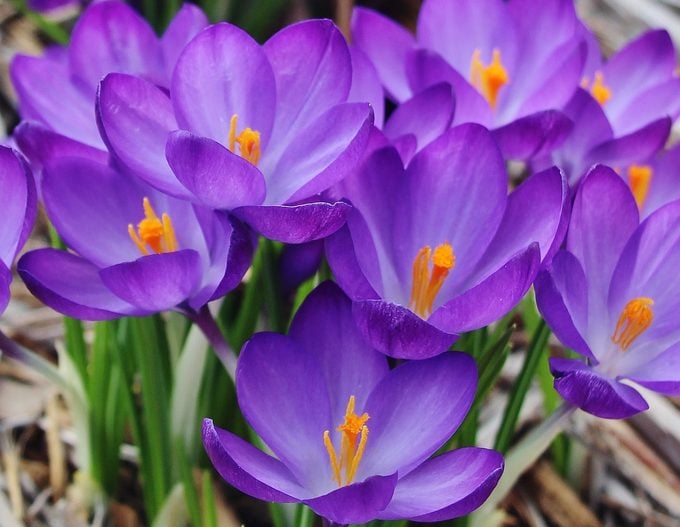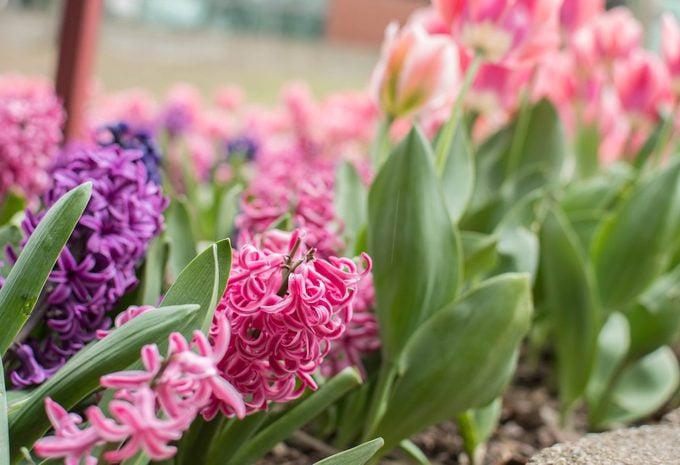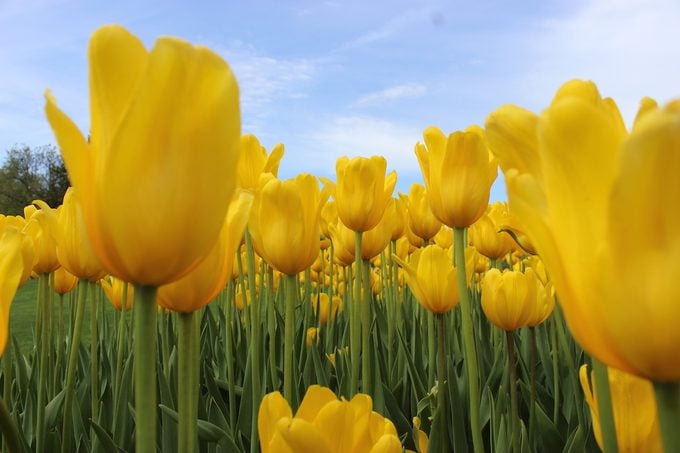The Ultimate Guide to Planting Spring Bulbs
Updated: Nov. 08, 2022
Lay the groundwork now for breathtaking blooms after the snow melts. Learn when to plant spring bulbs, how to choose the best bulbs, and how to plant bulbs.
Our editors and experts handpick every product we feature. We may earn a commission from your purchases.

Daffodils, hyacinths, crocuses and tulips are welcome sights for the winter-weary. If you’ve ever looked at a swath of colorful spring bulbs with envy, plant a bed of your own. With this helpful guide to planting spring bulbs, it’s easy to do and completely foolproof!
When to Plant Spring Bulbs
Plant spring-flowering bulbs (scilla, allium, tulip, fritillary, hyacinth, crocus, snowdrop) the previous fall. This gives them time to adequately chill before rolling out their spectacular show months later. Plant spring-blooming bulbs too early and they won’t bloom; plant too late and they won’t take root and establish. Ideally, bulbs should be planted at least six weeks before the ground freezes, when temperatures are cool. In the upper Midwest, for instance, that could be from about late September through mid-November. Learn how to find the first and last frost dates.
Bulbs to Plant in Spring
Other types of bulbs, such as dahlias and gladiolus, bloom in summer. Dahlia bulbs need to be planted in spring and dug up before winter. Learn how to overwinter non-hardy bulbs.

How to Choose Spring Bulbs
When buying bulbs at your local garden center, give them a good once-over. Make sure they are firm—avoid bulbs with mushy or moldy spots. Choose the largest bulbs in the variety you’re after, as those tend to be reliable bloomers. For a more comprehensive selection, check the websites of online nurseries. Check out 7 sensational sources for flower bulbs.
How to Plant Spring Bulbs
Keep them organized
Once bulbs are removed from their packages, chances are you won’t be able to tell which is which. Keep them contained, labeled or sorted until you’re ready to plant.
Prepare the Soil
Break up any clumps, remove rocks and weeds, and improve drainage and overall quality by mixing in organic matter such as compost or peat moss. The easiest way to do this is to dig one large hole instead of several individual ones. Then mix in amendments all at once.
Dig deep
Check packaging for specific planting instructions. If unsure, dig a hole that’s two to three times deeper than the bulb’s height. For example, plant a 2-inch-high bulb about 6 inches deep. (Smaller bulbs need a hole only about 3 inches deep.) Many garden tools designed for this type of planting provide measurement markers. (Hint: Speaking of tools, a bulb auger is ideal if you plan to plant a bevy this fall.)
Plant a bulb pointy side up, roots down. But whatever side is up, it will most likely find its way through the soil in spring. Add compost, organic matter or slow-releasing fertilizer. After planting, tamp down the soil lightly. Give the freshly planted bulbs a good soak, cover with a couple of inches of mulch, and say sayonara until spring.
Keep Critters Out
Squirrels and mice love digging up and snacking on freshly planted bulbs. To prevent their free buffet, either grow animal-resistant bulbs or lay wire mesh over the beds, then stake or weigh it down with stones. Remove the mesh once you see shoots in spring.
Where to Plant Bulbs
Look around and take stock of your existing plants. Consider where bare spots appear in early spring (under trees, in annual beds, along walkways where perennials won’t make an appearance until later), and imagine how a bed of beautiful bulbs would brighten up those areas.
You can also use spring bulbs to edge early-season perennial beds and walkways. The blooms provide welcome color to areas of the yard that are just starting to show signs of life. An added bonus? If you plant them behind the perennials, emerging plants hide the spent bulb’s foliage as it fades.
Choose a planting spot that gets at least six hours of sunlight per day and be rewarded with healthy, long-lasting blooms. The area should also have good drainage. Bulbs don’t like wet feet, so avoid areas with soggy soil where rainwater gathers, such as the bottom of a slope.
Plan for about five bulbs per square foot. Make sure to also provide a little distance from established plants because bulbs are known to multiply.
Here’s how to create a year-round garden with plants for all seasons.

How to Create Beautiful Spring Bulb Displays
Cluster for Color
Mix and match spring-blooming bulbs as you wish, but resist the urge to include too many colors or varieties. Two to three will keep the look interesting and tasteful. Imagine drifts of orange-fringed tulips and grape hyacinths, or sweeping drifts of daffodils in varying hues mixed with pretty pansies.
If you don’t have a lot of space, group one or two varieties together to create maximum impact. Concentrating color in small spaces delivers the most bang for your buck. Think bright, contrasting color if you’re the adventurous type. Muted pastels offer something more elegant.
Check out the top 10 tulip bulbs to plant for spring color.
Use Succession Planting
Select a few varieties with different bloom times. Intermingling early-, mid- and late-season bloomers sets the stage for an entire season of showstopping color.
Consider Flower Height
Adopt the double-decker technique and plant small, earlier flowering types such as crocus or scilla on top of larger mid- to late-spring blooming bulbs—tulips, daffodils and alliums.
How to Force Bulbs to Bloom Indoors
Force bulbs to bloom early by storing them in the refrigerator eight to 16 weeks, depending on variety. Keep them away from fresh fruits and veggies, as their gases cause spoilage. Once they’re properly chilled, transfer to a container filled with good quality potting mix. Store the container in an unheated garage or cellar until new growth emerges. Keep them in a cool, bright location indoors to enjoy spring a bit early. Then move them to a sunny location outside where you can enjoy the view.

